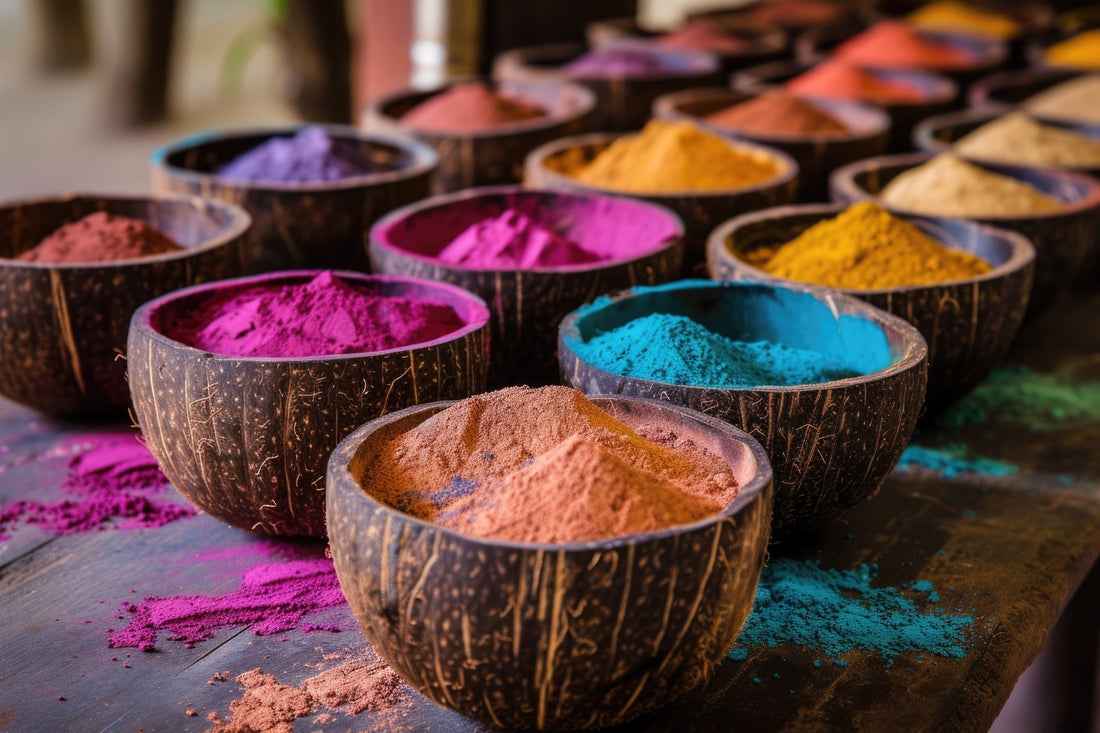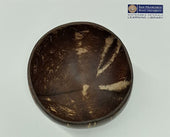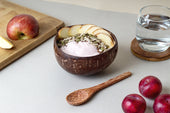From the rustling palms of Tamil Nadu to the lush groves of Kerala, the coconut isn't just a fruit. It's a symbol of purity, abundance, and deep spiritual connection. In the rhythm of Indian festivals, coconut holds a sacred, timeless place. It is cracked in devotion, grated into feasts, and repurposed with care. We trace the journey of the great coconut across Indian festivals throughout the year, from Pongal to Diwali, showcasing its cultural significance and how its traditional uses can inspire modern, sustainable living.
Why Coconut is Sacred in Indian Culture
Before we begin exploring festivals, it’s important to understand why the coconut is so deeply revered in Indian traditions.
-
Symbol of Selflessness: Every part of the coconut can be used. The water is consumed, the flesh is eaten, the shell becomes fuel or craft, and the coir serves as fiber. It represents a zero-waste ideal and reflects the ethos of sustainability long before the term became a trend.
-
Ritual Purity: It is considered as a satvik offering, meaning it is pure, natural, and nourishing. It is included in rituals as a symbol of purity and sacred intention.
-
Spiritual Symbolism: Breaking a coconut is symbolic of breaking the ego. The hard shell represents pride, and the white inner core symbolizes purity of heart. It is one of the most common ways to start a new venture, construction, or celebration.
-
Accessibility and Abundance: It grows abundantly in coastal India and is often one of the few items offered to deities that is both accessible and divine. It is not bound by class or cost — a truly democratic sacred object.
Makar Sankranti: The First Harvest Festival (January)
Makar Sankranti is celebrated across India as the festival that marks the sun’s transition into Capricorn. It is observed with unique regional variations, from kite flying in Gujarat to offering Pongal in Tamil Nadu.
-
In Maharashtra, people say “Tilgul ghya, god god bola” while exchanging sweets made with sesame and coconut.
-
In Andhra Pradesh and Karnataka, coconuts are offered during pooja to mark the harvest and sun worship.
Eco Tip: Make your tilgul ladoos with fresh grated coconut and reuse dry shells for festive table decor.
Pongal: A Coconut-Infused Harvest Celebration (Mid-January)
In Tamil Nadu, Pongal is a harvest celebration and thanksgiving to nature. It's a multi-day festival that celebrates agriculture, livestock, and the sun.
-
Sweet Pongal is cooked using jaggery, rice, and coconut milk, enhancing both flavor and richness.
-
Ven Pongal, the savory version, is garnished with fresh coconut and curry leaves.
-
In temples and rural homes, tender coconuts are offered during Surya Puja.
-
Children play traditional games using coconut shells and husk decorations.
Eco Tip: Coconut husks make great fire starters for traditional clay stoves. Shells can be turned into eco-friendly cutlery or lamps.
Maha Shivratri and Holi: Sacred Offerings and Spring Joy (February to March)
Maha Shivratri is dedicated to Lord Shiva and observed with fasting and night-long prayers.
-
Devotees offer whole coconuts, symbolic of surrendering their ego.
-
Coconut water and coconut-based sweets like coconut barfi are offered as naivedya.
- Coconut oil is traditionally used to light diyas in temples.
Holi, the festival of colors, also includes spiritual traditions (March)

-
Coconuts are placed in the bonfire of Holika Dahan.
- Coconut laddoos are distributed among neighbors and family.
Eco Tip: Instead of synthetic dyes, try Holi colors made from coconut shell charcoal and turmeric.
Ugadi and Gudi Padwa: New Year Celebrations with Coconut at the Center (March to April)
These springtime new year festivals are steeped in regional culture. Ugadi in Andhra and Karnataka, and Gudi Padwa in Maharashtra.
-
Coconut plays a key role in Ugadi Pachadi, representing sweetness among six life flavors.
-
In Maharashtra, a coconut is tied atop the Gudi as a blessing of prosperity.
-
Coconut water is used in ritual purification of the home.
-
Sweets like puran poli often have coconut fillings.
Eco Tip: Reuse cleaned coconut shells to create mini flower vases or spice bowls.
Vishu: The Golden Coconut of Kerala (Mid-April)
Vishu marks the beginning of a new financial year in Kerala.
-
The Vishu Kani arrangement always includes a golden coconut, decorated with turmeric and sometimes gold foil.
-
Coconut oil lamps are lit before dawn, believed to bring clarity and prosperity.
-
Avial, thoran, olan, and payasam - all made with generous use of coconut milk and grated coconut.
Eco Tip: Nariyal-style coconut shell bowls can be used to make candles and diya holders that fit beautifully into this early morning ritual.
Onam: Kerala’s Grandest Celebration (August to September)
Onam celebrates the mythic return of King Mahabali. Coconut is everywhere; from feasts to floral art.
-
The Sadhya meal includes dishes like avial, pachadi, and erissery - all using coconut.
-
Pookalams sometimes feature coconuts or coconut-based art.
-
Coconuts are also used as game tokens and decor in traditional sports.
Eco Tip: Use discarded coconut husks to craft small serving trays or trinket holders for guests.
Raksha Bandhan: A Bond of Love Sealed with Tradition (August)
Though less common, some traditions include coconut as part of the rakhi thali.
-
A small coconut is sometimes placed alongside the rakhi and diya.
-
In rural homes, coconut is given as a blessing instead of sweets.
Eco Tip: Wrap your gift in a coconut husk gift pouch for a rustic, memorable look.
Janmashtami: Celebrating Krishna with Simplicity (August to September)
The birth of Krishna is celebrated with music, dance, and food.
-
Coconut ladoos are popular prasad, made with ghee and jaggery.
-
In some states, pots filled with coconut and curd are hung for Dahi Handi.
Eco Tip: Turn your leftover coconut shell into a baby Krishna cradle decoration!
Ganesh Chaturthi: Modaks and Coconut Offerings (August to September)

-
Steamed modaks have a filling of fresh coconut and jaggery.
-
Coconut water and whole coconuts are offered in daily aarti.
-
Dry coconuts are used to prepare panchamrit or coconut-based barfis.
Eco Tip: Use coconut leaves as torans and banana-stem runners to keep the entire setup plastic-free.
Karva Chauth: Fasting, Devotion and the Moon (October)
Karva Chauth rituals often include coconut as part of the sargi and evening thali.
-
Women include dry coconut sweets to sustain during the fast.
-
Coconut water is offered after moon sighting.
Eco Tip: A coconut shell bowl with floral carvings can be a beautiful diya holder.
Navratri and Durga Puja: Nine Nights of Devotion (September to October)
In both western and eastern India, coconut is central to invoking divine feminine energy.
-
A coconut is placed atop the kalash during Navratri Ghatsthapana.
-
In Bengal, coconut sweets are used in Durga bhog.
-
Coconut husk may be part of the fire offerings during havan.
Eco Tip: Make compost with leftover coconut husk and banana leaf bhog plates.
Diwali: The Festival of Lights and New Beginnings (October to November)

-
Coconut oil diyas are traditionally used before synthetic oils became popular.
-
Coconuts are broken as part of Lakshmi Puja and new business ventures.
-
Sweets like coconut burfi and nariyal chikki are festive staples.
Eco Tip: Paint your coconut shells in gold and use them as tea-light holders or name card stands.
Beyond the Festivals: Coconut as a Cultural Constant
-
In weddings, coconut is gifted to the bride and groom for fertility and abundance.
-
In funerals, a coconut may be cracked or floated down the river to represent the soul’s release.
-
Ayurveda uses coconut oil for Shirodhara, hair rejuvenation, and cooking.
India’s Traditional Coconut Wisdom: Region by Region
-
Tamil Nadu: Shell-based crafts and traditional lamps are common.
-
Kerala: Coir industries thrive alongside culinary uses.
-
Maharashtra: Narali Purnima celebrates the coconut directly.
-
Bengal: Coconut is used in bhog, sweets, and festive decor.
-
North-East: Used mostly in festive imports and high-value offerings.
Reimagining Coconut for Today:
At Nariyal, we believe tradition is the best blueprint for sustainability. We:
-
Reclaim discarded coconut shells from food processing hubs.
-
Employ artisans to handcraft bowls, candles, and accessories.
-
Educate our audience about circular living: starting with a fruit that’s been circular for centuries.
The Coconut is a Compass
From the sweet aroma of Pongal to the sparkling lamps of Diwali, coconut quietly shows up: nourishing, decorating, honouring. It binds generations with its utility and meaning.
So the next time you crack open a coconut, remember - it's more than just a shell.
-
It's a bowl. A candle. A story. A step toward a better planet.

Ready to start your own coconut story? Explore our eco-friendly creations at nariyal.co and bring the festival spirit into your everyday life.








